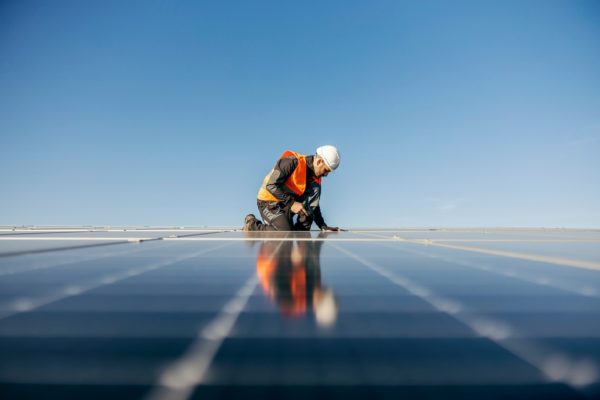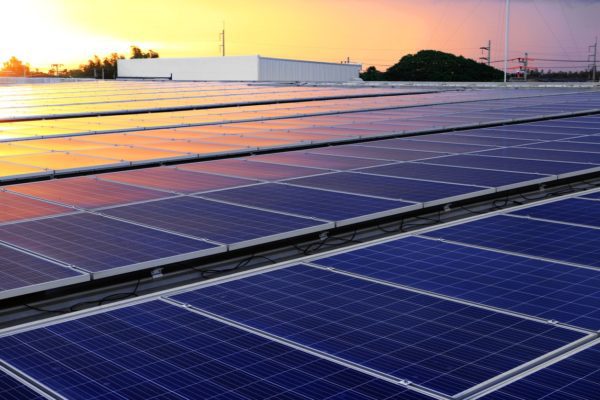
Solar panels are a smart investment for businesses and companies. It is especially true if your business property has a south-facing roof or southern exposure. Many commercial, agricultural, and industrial businesses with largely unshaded properties opt for solar energy. Renewable energy has helped these businesses eliminate the electricity cost and enabled them to invest in the business.
The good news is that Federal Solar Investment tax credit [ITC] assists businesses in turning free solar light into economical and clean energy. It has revamped and updated the ITC schedule by extending it through 2035. The increased schedule will likely impact the saving potential for companies looking to upgrade their bottom.
While a list of other incentives, including USDA Reap grants, makes a commercial solar project cost-effective, the federal ITC is one of the most popular and lucrative. If your business is considering investing in commercial solar projects, keep reading to find out if you can claim solar as a business expense.
Solar Tax Credit

The Solar Tax Credit typically provides a dollars-for-dollars decrease in federal tax liability. IRC (Internal Revenue Code) grants commercial properties a tax credit for installing solar equipment as a part of their energy credit.
This energy credit, as a result, adds to the investment tax credit, which entails a part of the general business credit. Note that the general business credit is solely refundable against tax obligations. Any unused percentage, however, can be applied to taxes from the current year and 20 years in the future.
The solar tax credit is calculated as a percentage of the qualified property cost, also known as solar energy property, that is put into operation within a given year. The percentage changes based on the year construction started:
- 30 percent no later than 2019
- 26 percent in 2020-2022
- 22 percent in 2023
- 10 percent in 2024 or later
- 0% for solar energy property using fiber optics.
If your company doesn’t start utilizing the solar equipment before 1st January 2026, the credit automatically lowers to 10%.
When “physical work (any sort) commences, the IRS deems construction to have started. This evaluation examines all the information and circumstances related to the property’s construction. Alternately, the IRS considers the criterion satisfied whenever your business pays at least 5 percent of the total expenditures of the project.
Either of the tests mentioned above must be met for continuous construction progress. If your business starts using the property within specific years after starting its development, the IRS typically deems these criteria met. The precise number of years has fluctuated, mainly due to the pandemic. The IRS has yet to expand this provision to projects that started in 2021 or later.
Which Property Qualifies for the Solar Tax Credit?

The domain of solar power has significantly gone popular over the decades. The overall prices of solar technologies have also plummeted recently. The electrical system powered by solar energy is credible and reliable. It may include both basic electrical supply and cost-effective back power sources.
According to EnergySage, commercial business owners’ average monthly power expenses before switching to solar energy were $1,950. Interestingly, these business expenses fell to around $500 after switching to solar energy. That 75% reduction can be a significant reason for installing solar panels in your company.
Solar power properties typically employ solar energy to produce electricity, control a building’s temperature, or supply hot water to a building. Passive solar systems like greenhouses are not included in them.
Some examples of solar-powered properties include:
- Solar panels and their equipment
- Batteries
- Energy storage if charged 75 percent by renewable energy
- Other electrical equipment
The solar energy property cost includes sales taxes, installation fees, and some indirect labor. The solar tax credit is also available for fiber-optic solar energy systems, which employ solar power to illuminate buildings with natural sunshine. However, as was already said, the credit for these properties ends sooner.
If used equipment accounts for more than 20% of the overall cost, the property is not considered solar energy property. If you heat the pool, for instance, it disqualifies the property.
Understanding Solar Tax Credit for Your Business
Businesses and other organizations that buy solar energy systems are eligible for two tax credits, including NGOs, local governments, and tribal governments.
The investment tax credit (ITC), as was already mentioned, is a tax credit that lowers the federal income tax obligation for a portion of solar system cost installed during the same tax year.
However, for the first 10 years of a system’s operation, the production tax credit (PTC) is a tax credit for electricity produced by solar and other qualifying technologies. It lowers the income tax liability. It is updated each year to account for inflation.
However, depending on the IRS’s future guidance, project owners may be able to claim separate credits for co-located systems like solar and storage. In general, project owners cannot claim PT and the ITC for the same property.
Other storage technologies and renewable energy forms are also eligible for the ITC. If they meet the labor specifications set forth by the Treasury Department or are smaller than 1 megawatt (MW), solar systems that go into service in 2022 or later and begin construction before 2030 are eligible for getting 2.6 PTC and 30% ITC.
Expenses that Qualify for the ITC

Understanding what expenses are allowed to include is crucial in calculating how much tax credit the system is eligible for. The ITC is estimated based on the cost of building the system cost while the PTC is dependent on the amount of electricity produced by a system.
The “tax basis” or the sum paid for the qualified property is multiplied by the valid tax credit percentage to determine the ITC.
The following are the eligible property expenses:
- Installation fees and some prorated indirect expenses such as inverters, solar PV panels, balance-of-system equipment, racking, and sales and use tax on the equipment
- CSP equipment is required to produce electricity, heat or cool a structure, or provide solar process heat
- Surge protectors, circuit breakers, and step-up transformers like energy storage systems with a capacity rating of at least 5-kilowatt hours
- For projects with a tax basis of 5 MW or less, the costs of the interconnection property incurred by the project owner to enable the distribution and transmission of the system’s electricity production or storage may be included.
These costs may extend past where the property interconnects with the distribution or transmission systems.
Except for any incremental cost or the amount you would have invested if the roof had not been utilized for solar, the cost of installing a roof is typically not eligible. Solar shingles, solar tiles, or the additional expense of adding reflective roof membranes that boost electricity output could be included in these expenditures.
Claiming Solar Tax Credit

To claim solar as a business expense, you need to report the year your business started using the solar-powered property on lines 12b, 12c, and 12d. It depends on the year during which construction started.
After being determined on Form 3468, the investment credit is subsequently entered on Form 3800. The company credit is calculated on Form 3800, while it appears on Schedule 3 (Form 1040) for individuals.
Be careful not to mix up the residential and commercial solar tax credits when referring to the solar tax credit. Keep in mind that the home credits have the same but different rules.
The non-business solar-powered property credit, which includes the residential solar tax credit, is calculated on Form 5695. After that, schedule 3 of Form 1040 contains the non-business energy property credit.
However, tax savings from the solar tax credit for businesses are substantial. After 2022, the credit percentage reduction, you can maximize your savings for your business by planning solar panel installation.
Make Your Transition to Solar Easy with Coldwell Solar
The time has come for your business to switch to solar power if you’ve been thinking about it. Installation schedules for 2023 are filling up quickly due to the rising popularity of solar energy. Government tax credit extensions are never guaranteed and shouldn’t be counted on.
Coldwell Solar, you can start your solar journey to ensure that your project qualifies for the complete 30% federal ITC on your 2023 taxes if your organization wants to benefit from the 30% federal ITC. Many customers in the agricultural and business sectors rely on Coldwell Solar to make the switch to Solar as hassle-free as possible.
Superior customer service is what Coldwell Solar is famous for. To assist business owners in achieving long-term energy cost savings, the company works closely with them. Coldwell Solar helps build, manage, and maintain utility-scale solar energy systems and serves agricultural and commercial clients. You can quickly determine your business’s savings and solar potential by using their solar savings calculator.
If you’re interested in investing in and installing solar panels, get in touch with Coldwell Solar in California.

